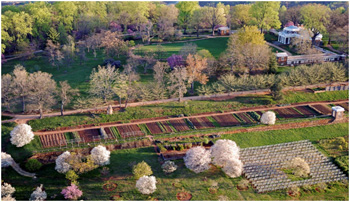Bringing Back Mulberry Row
Building upon more than 50 years of archaeological investigation and documentary research, Monticello staff is now in the process of interpreting and restoring Mulberry Row. Lined with more than 20 dwellings, workshops, and sheds, Mulberry Row was the constantly-changing hub of the 5,000-acre Monticello plantation. Although it was essential in Jefferson’s time, its buildings have all but disappeared—only the remains of four structures survive. Without most of the buildings, how can we effectively convey the sense of the place and the stories of the scores of people—enslaved and free--who lived and worked there?
A team of archaeologists, curators, educators, and historians is planning the interpretation and restoration of Mulberry Row, which will take place in phases over several years. Our findings and research will be presented on this blog. We invite you to participate in the process by sharing your ideas and reactions. Follow our posts and let us know what you think. Your feedback will help us shape what we do as we design an on-site exhibition, web site, computer animations, and ponder the re-creations of buildings.
Over the next year, this blog will present the ideas and issues we’re grappling with:
- Mulberry Row’s people—the weavers, spinners, blacksmiths, tinsmiths, nail-makers, carpenters, joiners, gardeners, stablemen, and domestic servants,
- the organization and function of the Monticello plantation,
- Jefferson’s efforts to make money through agriculture and light industry,
- the results of archaeological investigation,
- how Mulberry Row changed over time and why, and
- the restoration of existing structures and the re-creation of others
Next post: Mulberry Row and the larger Monticello plantation.
Our work is generously supported by an award from the National Endowment for the Humanities, the Fritz and Claudine Kundrun Foundation, and private gifts.



